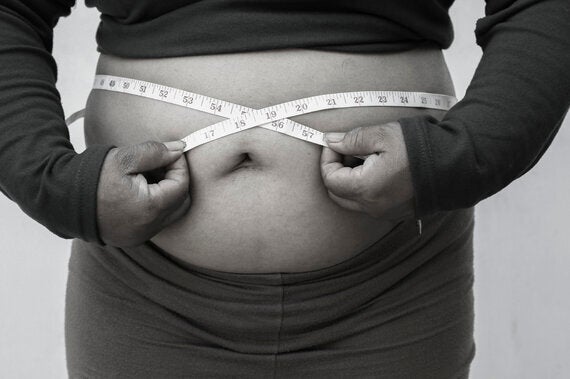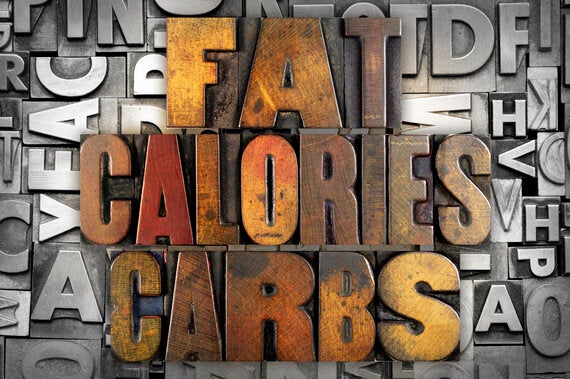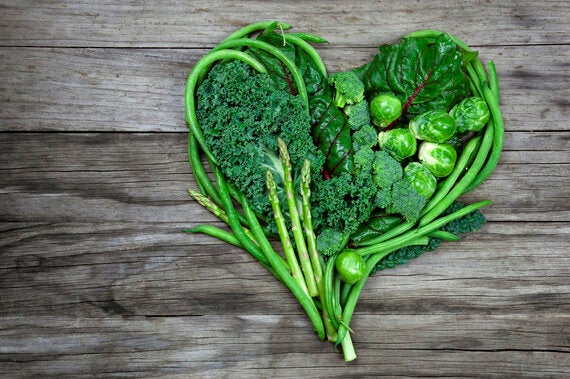
Credit: iStock
Although losing weight is not really my thing. It's a subject I am always being asked about, as if you're trying to lose weight; it's very easy to get lost in all the information, good and incredibly bad, that's out there.
With so many diets to choose from, how do you find one that delivers on the promises?
Most are pretty useless in truth. As with all things fitness - successful dieting is about strict application and endeavour. Just as Rome wasn't built in a day, the same applies to dieting.
So perhaps the most important thing when it comes to finding the right diet for you is adherence.
You need to find something you can stick to, otherwise it's never going to be successful. So when choosing a diet, find one that you know you will be able to see through from start to finish.
To help you find the right diet for you, we've taken a look at 5 of the most popular strategies that you can employ in your attempts to drop weight. All have their advantages, and as you'll see, they all have some potential downsides too.
Which one will you choose?

Credit: iStock
1. Calorie Counting
What is it?
Backed by science and proven by elite athletes and physique competitors around the world, there is no denying that calorie counting does work. But that doesn't necessarily mean its right for you.
Calorie counting usually involves working out the amount of calories you need each day to maintain your weight, and then adding or subtracting extra calories depending on your goals. So, if your goal is fat loss, you would consume slightly less calories than you need to maintain weight; thus putting you in a calorie deficit. Your body will then burn its fat stores to make up for the extra energy expenditure - in theory, at least.
Why it works
Calorie counting is basic human physics. If you are consuming less energy than you are burning, your body has to compensate for that energy somehow. If you can be strict enough with your calorie counting and keep your body in a controlled caloric deficit, you will find it fairly easy to lose weight and reach your goals.
The downsides
One of the main problems with calorie counting is that 'real life' makes it very difficult to implement. Unless you are weighing and tracking every morsel of food that you put in your mouth, it becomes very easy to go over or under your target daily calories. It also makes eating out a pain, as it is almost impossible to track the calories of restaurant food with any accuracy.
Another problem with calorie counting is that it disregards the nutritional value of food. You can eat 2,500 calories in pizza and ice cream, or 2,500 calories of chicken, brown rice and broccoli. Many people get too wrapped up in the numbers when calorie counting and often forget to prioritise the nutritional value of the food that they are eating.
Lastly, calorie counting can be very frustrating and time consuming, particularly if you lead an already busy life. In this case, an option such as Fresh Fitness Food can be very helpful, as they can track, weigh and measure all of your meals for you.

Credit: iStock
2. Paleo
What is it?
Also known as 'The Caveman Diet,' Paleo is a diet designed to replicate the way that our ancestors ate - by only eating foods that were available before agriculture.
As such, the paleo diet is built around meat, fish, eggs, vegetables, fruit, nuts and seeds. All grains are out, as they came along later in our evolution. Dairy, sugar, and all kinds of processed foods are also off the menu.
Why it works
There is no doubt that we would all be better off eliminating processed foods from our diet. The paleo diet cuts out many of the 'empty' carbohydrates like bread, pasta, biscuits and cakes which offer virtually no nutritional value and plenty of calories to boot. By removing these from your diet and replacing them with whole foods, like fruit and vegetables, you'll quickly find yourself firmly on the road to weight loss.
The paleo diet, by nature, is also higher in protein and lower in carbohydrate than the standard Western diet. This is excellent for those looking to lose weight, particularly if they are not very active.
Paleo encourages we eat more natural foods, and cut down on anything that comes in a box or a bag. There's no denying that this is sound nutritional advice.
The downsides
There aren't many downsides to paleo, particularly if weight loss is your main goal. However, if you are particularly active, be careful that you don't go too low on the carbs on your paleo diet. A common way to avoid this is making sure to eat plenty of vegetable based starches, such as potatoes and sweet potatoes, to compensate for the absence of grains.
Some people also find paleo to be very restrictive, which can make long term adherence a problem. If you struggle to stick to paleo and find yourself close to falling off the wagon, consider following a more flexible 80:20 rule that allows room for treats every now and then.

Credit: iStock
3. Clean Eating
What is it?
Inspired by one of the most popular Instagram hashtags of the last few years, 'Clean Eating' is a health food craze that involves eating a diet that is as 'clean' as possible. In pretentious health foodie speak, this means eating natural foods, preferably organic, and cutting out foods that are processed or excessively high in calories.
Why does it work?
Clean eating puts a lot of emphasis on eating whole, unprocessed foods, which means it is naturally a diet rich in nutrients and lower in calories. It also cuts out the chemicals that make it in to our food supply, such as artificial sweeteners, colours and preservatives that can cause health complications when consumed too often.
Eating more whole foods is one of the most important things you can do for your health, so there's no denying the effectiveness of this aspect of clean eating. However, there is a serious risk of taking the 'clean eating' bandwagon too far.
The downsides
Too much emphasis on 'clean eating' can cause a dysfunctional relationship with food, and is also unrealistic for a lot of people. Clean eating means that your favourite treats are almost guaranteed to be off the menu - and without some kind of reward for your hard work, it becomes much easier to fall off the wagon.
'Clean eating' can also mean you inadvertently go too low on the calories, leading to muscle loss. It can be tempting to want to lose weight as quickly as possible when dieting, but it is important to try and preserve as much muscle as possible to avoid looking even more out of shape than before!
4. Intermittent Fasting
What is it?
Intermittent fasting, known in short as 'IF', involves going without food for an extended period of time. Fasts can last anywhere between 12 and 72 hours, however the most common IF strategy is to fast for 12 - 18 hours, condensing your food intake into the remaining window during the day.
Why does it work?
By going for longer periods without food, it becomes harder to over consume calories. Condensing your caloric intake into a shorter window makes it harder to overeat, as opposed to grazing throughout the day where it is much easier to consume an excess of calories. Intermittent fasting also works well from a lifestyle and satiety point of view, as it allows the user to eat bigger, more satisfying meals simply by skipping breakfast for a few hours.
There is also significant evidence to suggest that fasting, particularly for longer durations, enhances the production of ketones, which encourages the body to burn fat for fuel. Fasting has also been shown to improve insulin sensitivity, which means the carbohydrates you eat will be burned for energy more efficiently rather than being stored as fat.
The downsides
On the flipside of the coin, some people find that they get too hungry when they fast for extended periods of time, and as soon as the fast is over they reach for something sugary or high in calories. Extended periods of hunger are one of the main reasons why people struggle to stick to intermittent fasting, however you will often find that if you stick at it for a few weeks, your body becomes more resilient to hunger as it adapts to your new eating schedule.
Intermittent fasting can also be difficult for women, as their hormonal profile makes it harder for them to go without food for longer periods of time.

Credit: iStock
5. Atkins
What is it?
The Atkins Diet just refuses to go away. That's probably got a lot to do with the fact that it has worked for so many people for so many years.
Atkins was the original low carb diet, created by physician Dr Robert Atkins in 1972. Subjects are put on a strict diet that avoids grains, tubers, almost all fruit and many vegetables. Foods such as meat, fish, eggs, some nuts and seeds, avocados and dairy products are staples.
Why does it work?
Carbohydrate intake on the Atkins Diet is often lower than 20 grams per day, which puts the body into a state of ketosis - thus encouraging the rapid burning of body fat. As Atkins is high in protein and fat, satiety levels are much easier to control which means subjects find it easier to maintain a controlled calorie deficit.
The downsides
Users of the Atkins diet often find themselves lacking energy and feeling run down, largely because of the absence of energy that previously came courtesy of the carbohydrates. For this reason, it is important to eat plenty of healthy fats such as avocados, nuts, seeds, eggs and oily fish to replace this lost energy and avoid too much fatigue.
Atkins can also often be excessively high in protein, which can put a lot of pressure on the liver and kidneys. Take it easy on the meat consumption and be sure to eat plenty of low carb vegetables such as broccoli, spinach, kale, tomatoes, peppers and mushrooms.
Lack of fruits and vegetables is the biggest problem with Atkins, as many of them are excluded due to the naturally occurring carbohydrate content. It is for this reason that we recommend if you do decide to give it a shot, to use Atkins as a short term approach to weight loss, rather than a long term approach to health.
If you want to know more about Health, Nutrition and Fitness then please visit our website www.jameshaskell.com.
Please send us your questions and any comments you would like to make, via our social media channels.
Plus if you feel informed by what you have read, please share the information using #JHHF #RugbyFit #jhtraining
Twitter - @jameshaskellhf
Instagram @jameshaskellhf